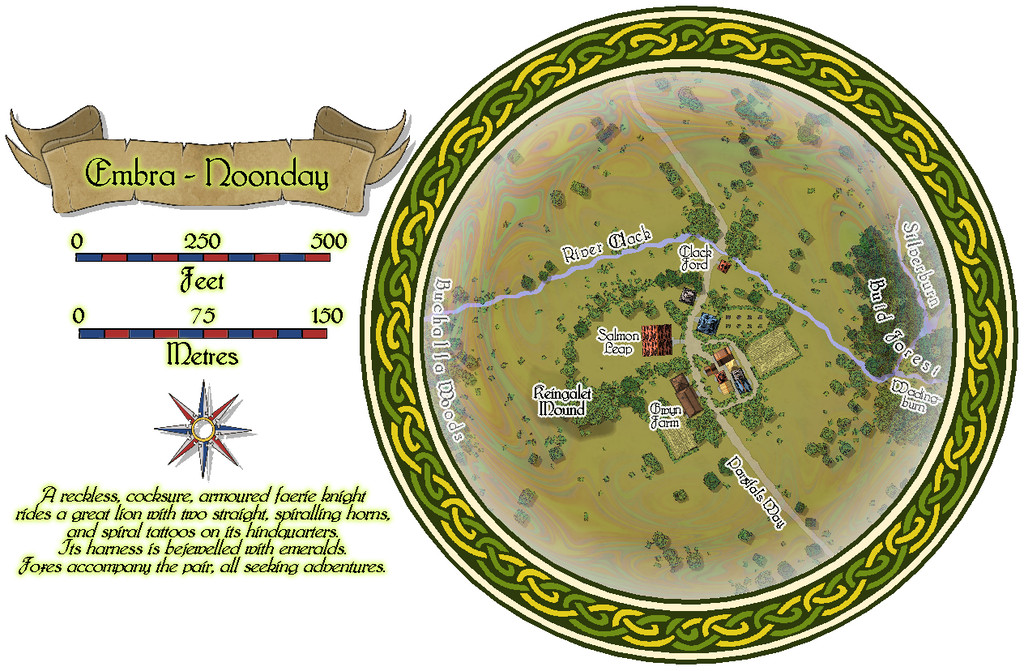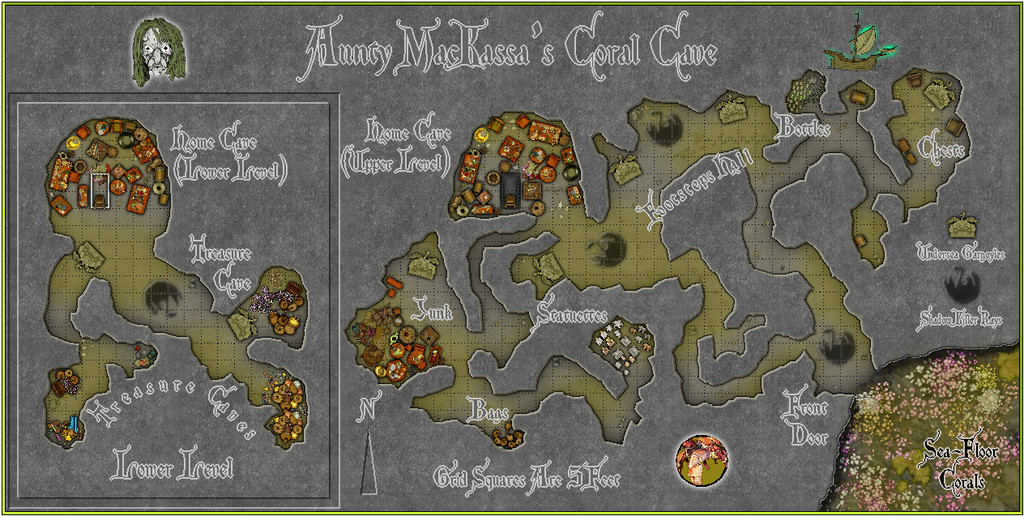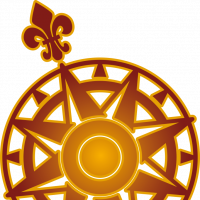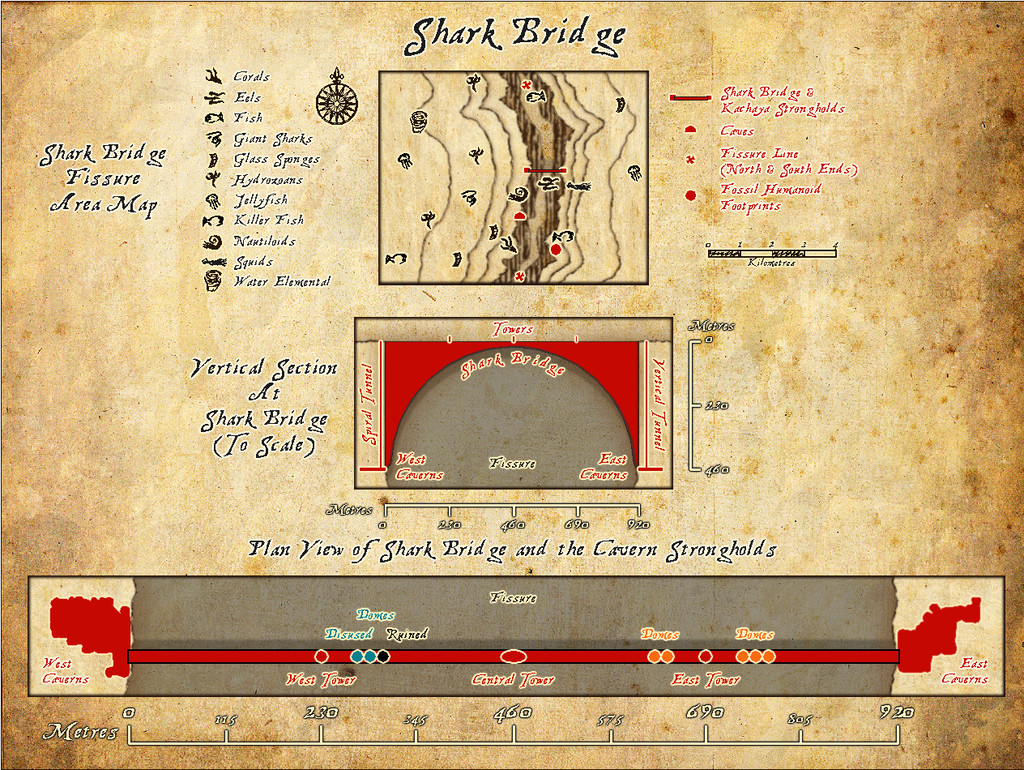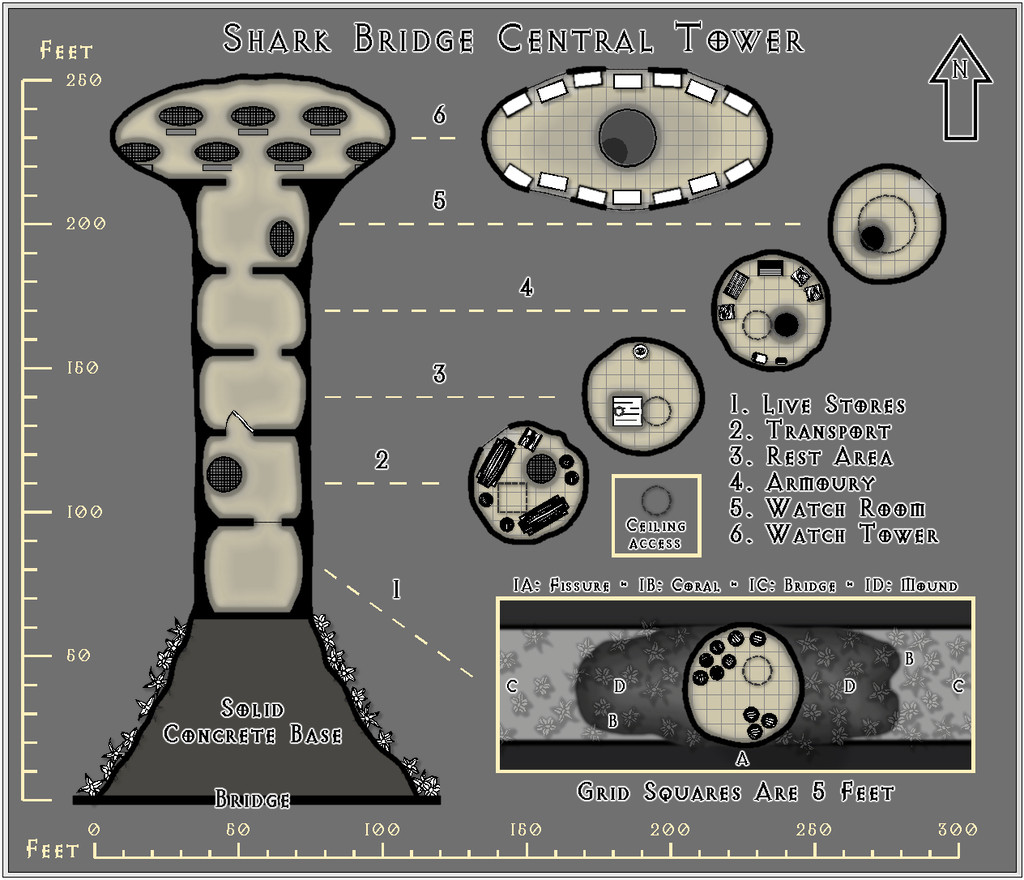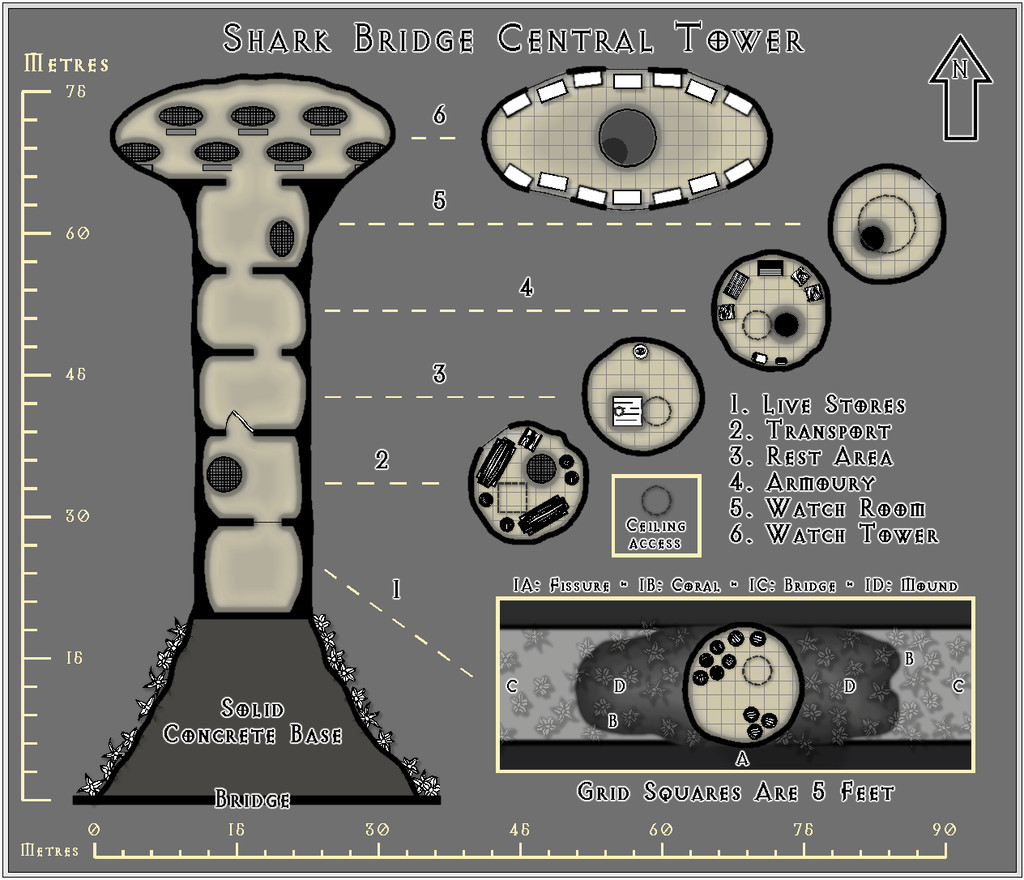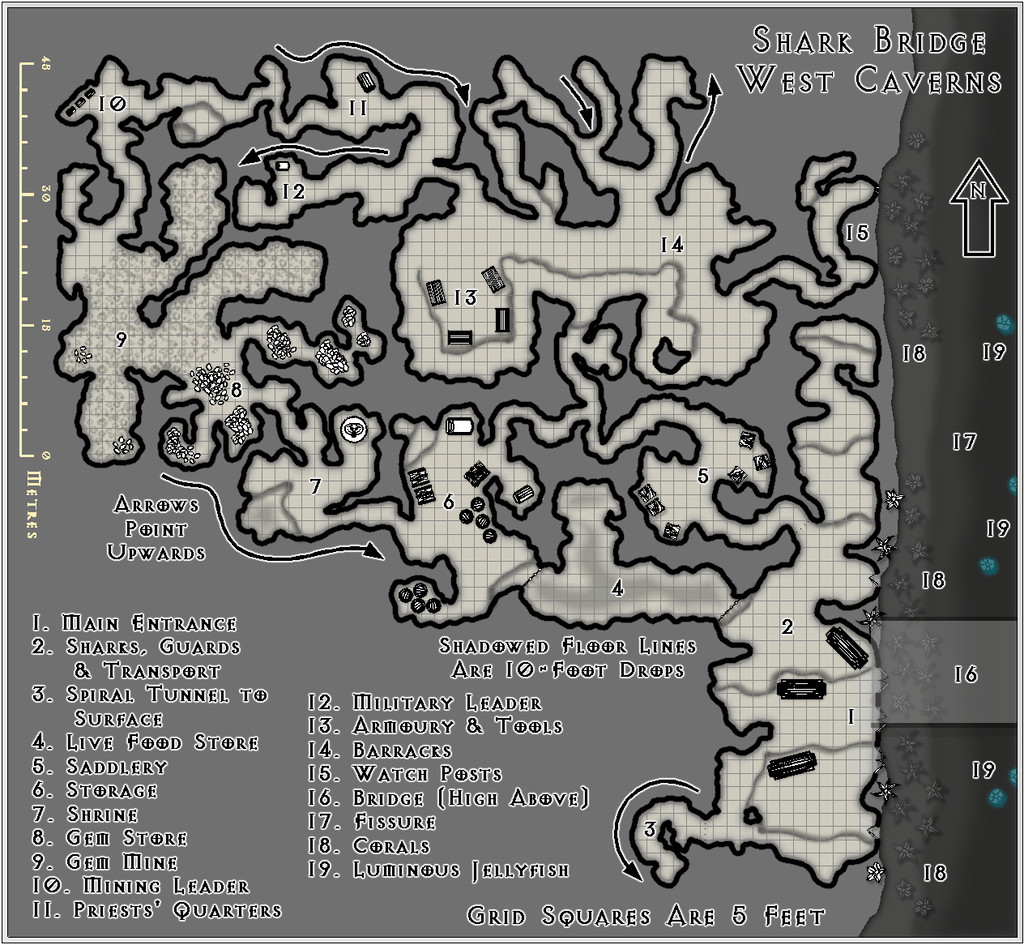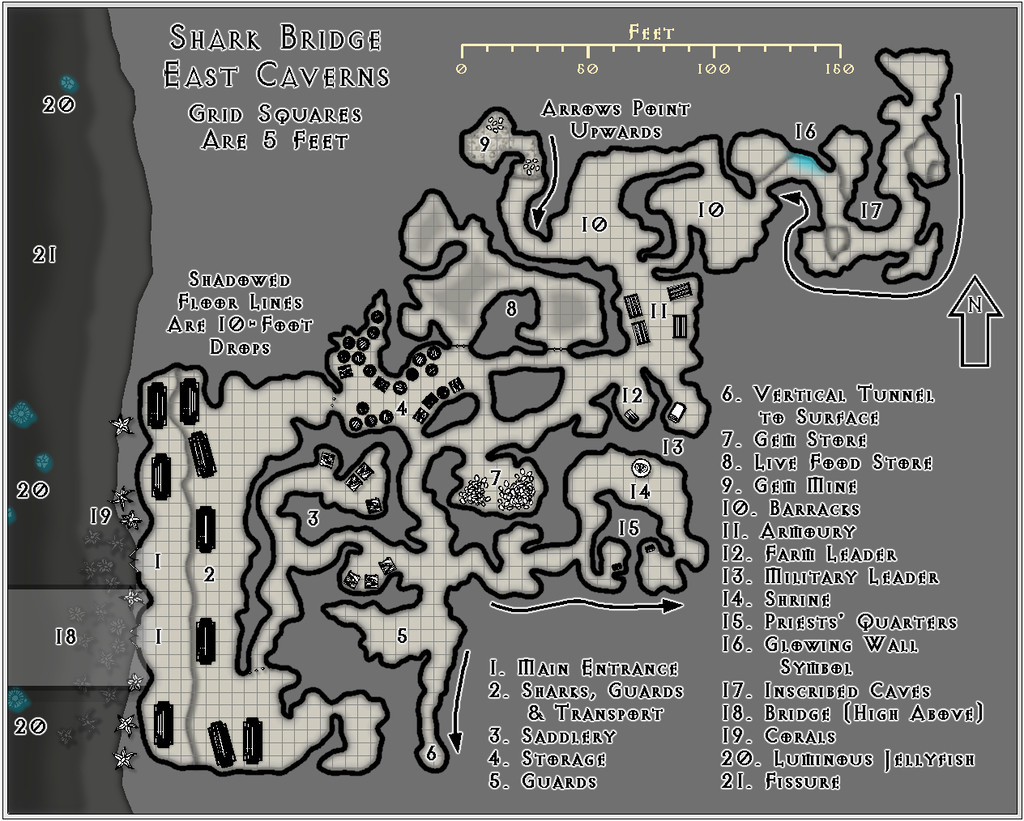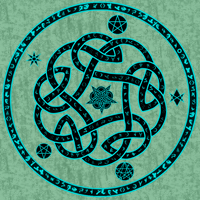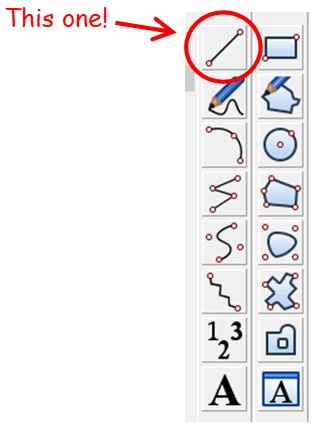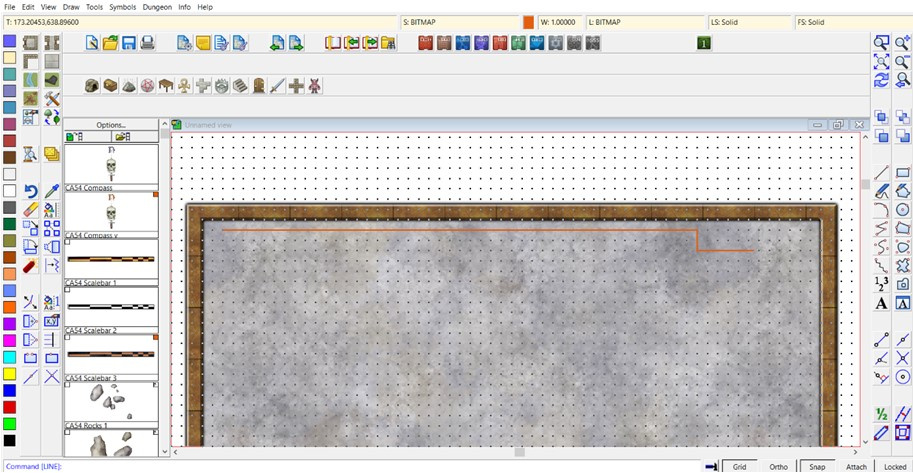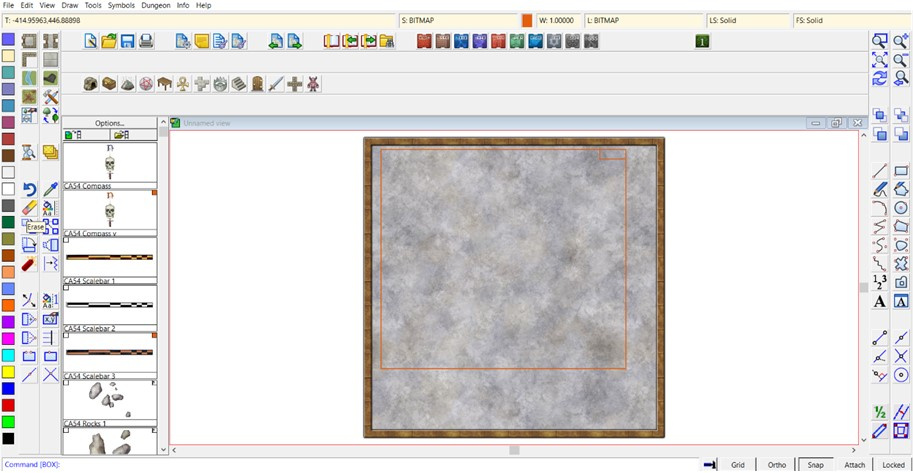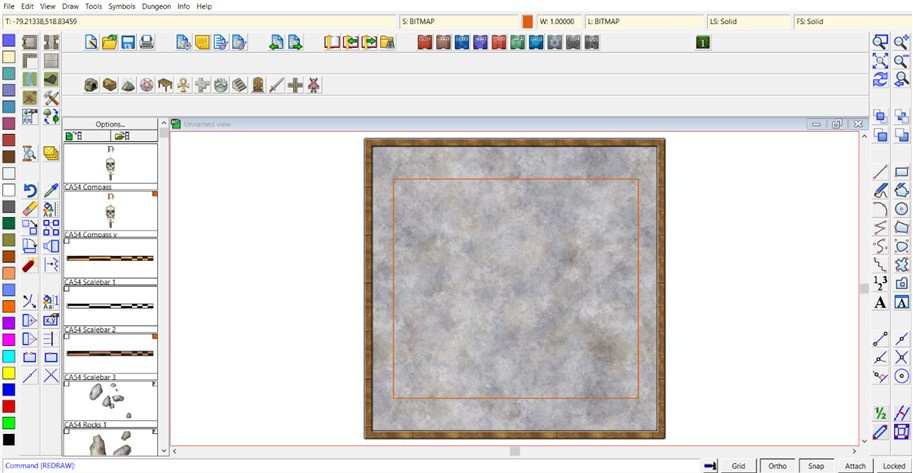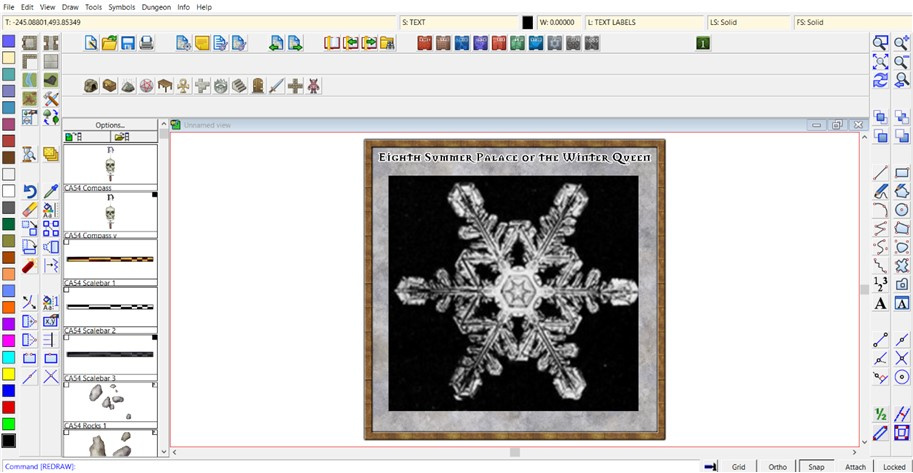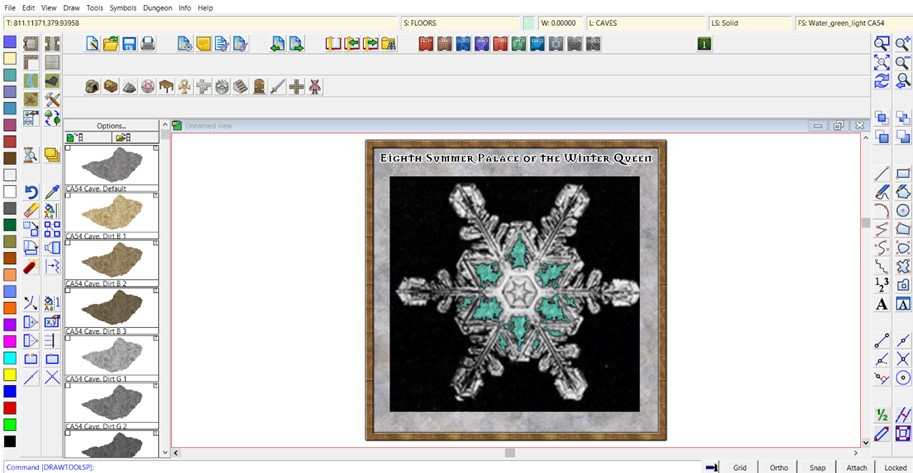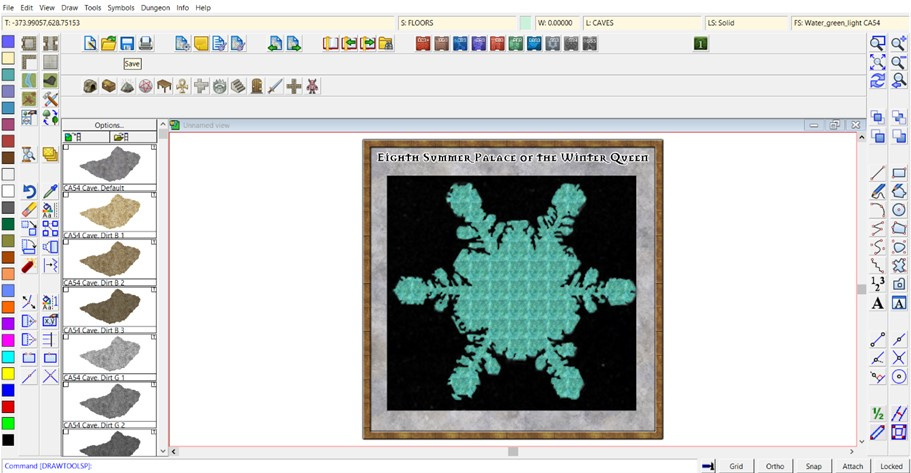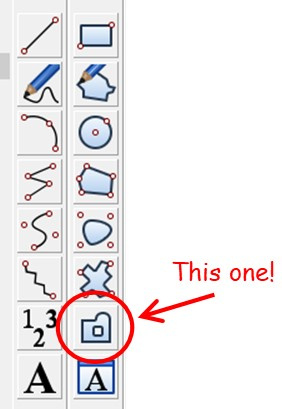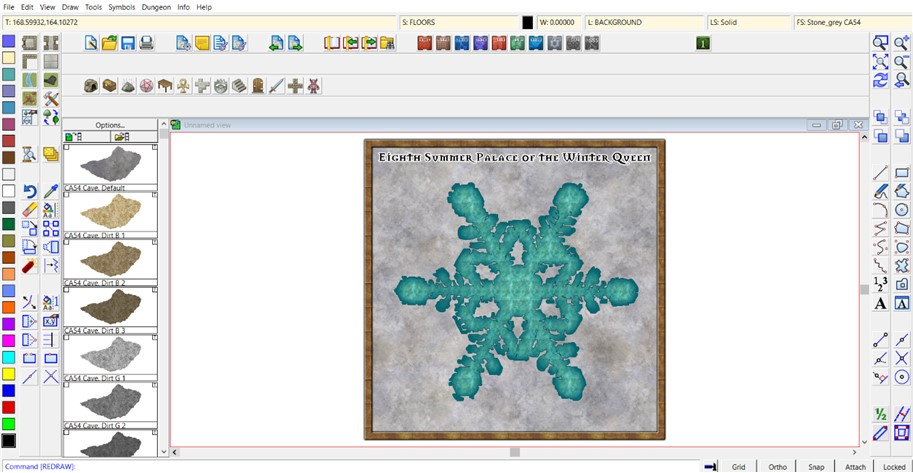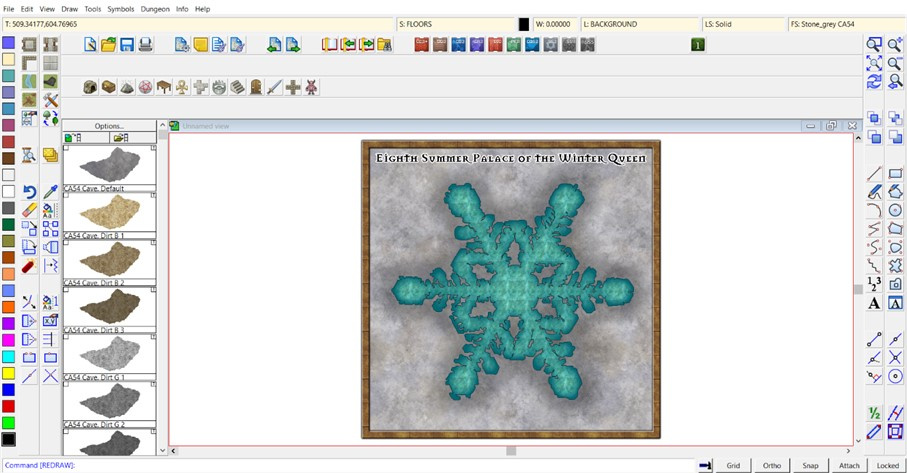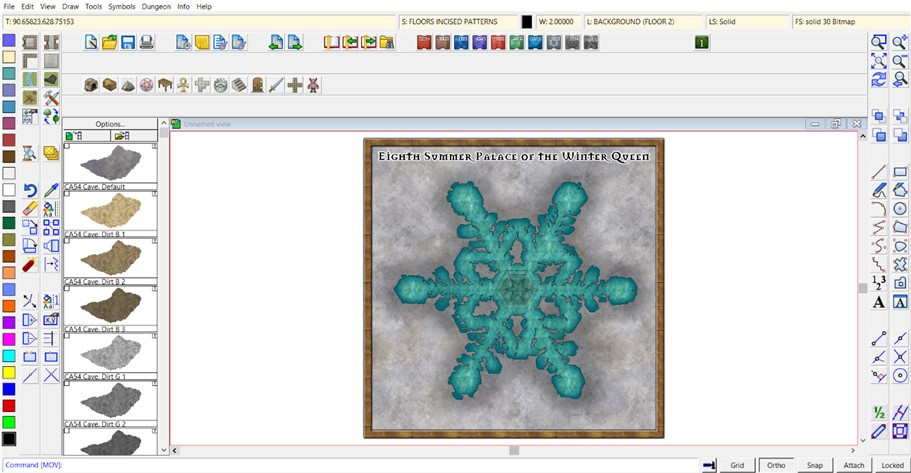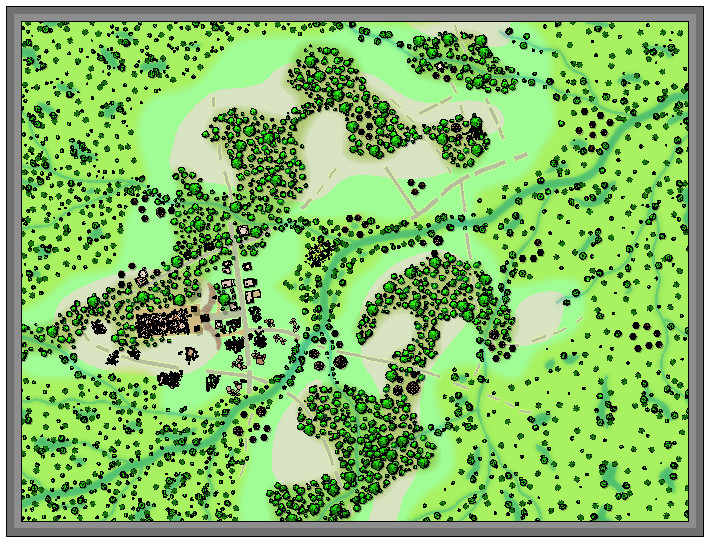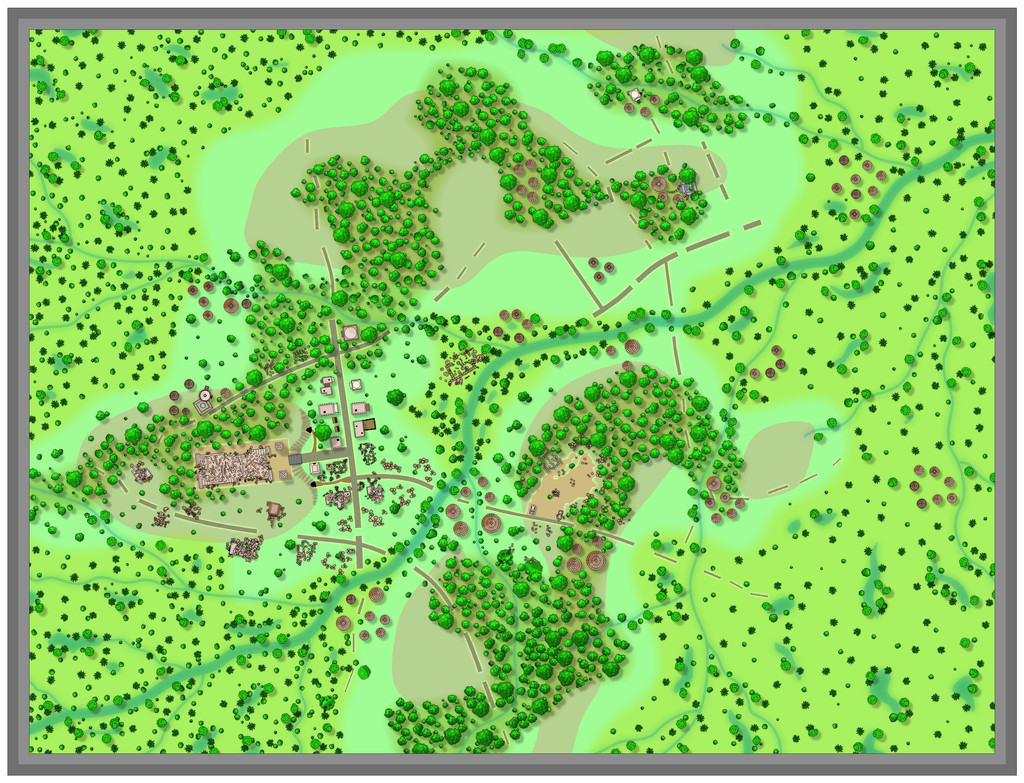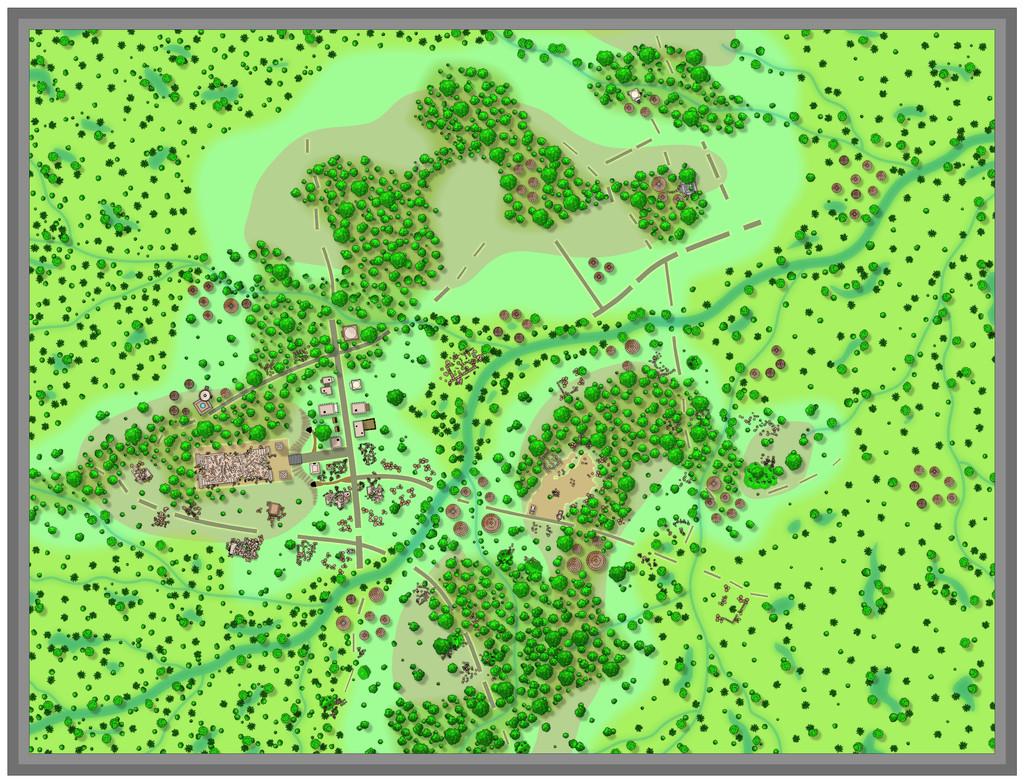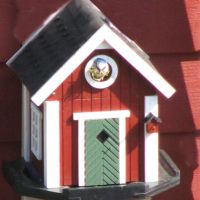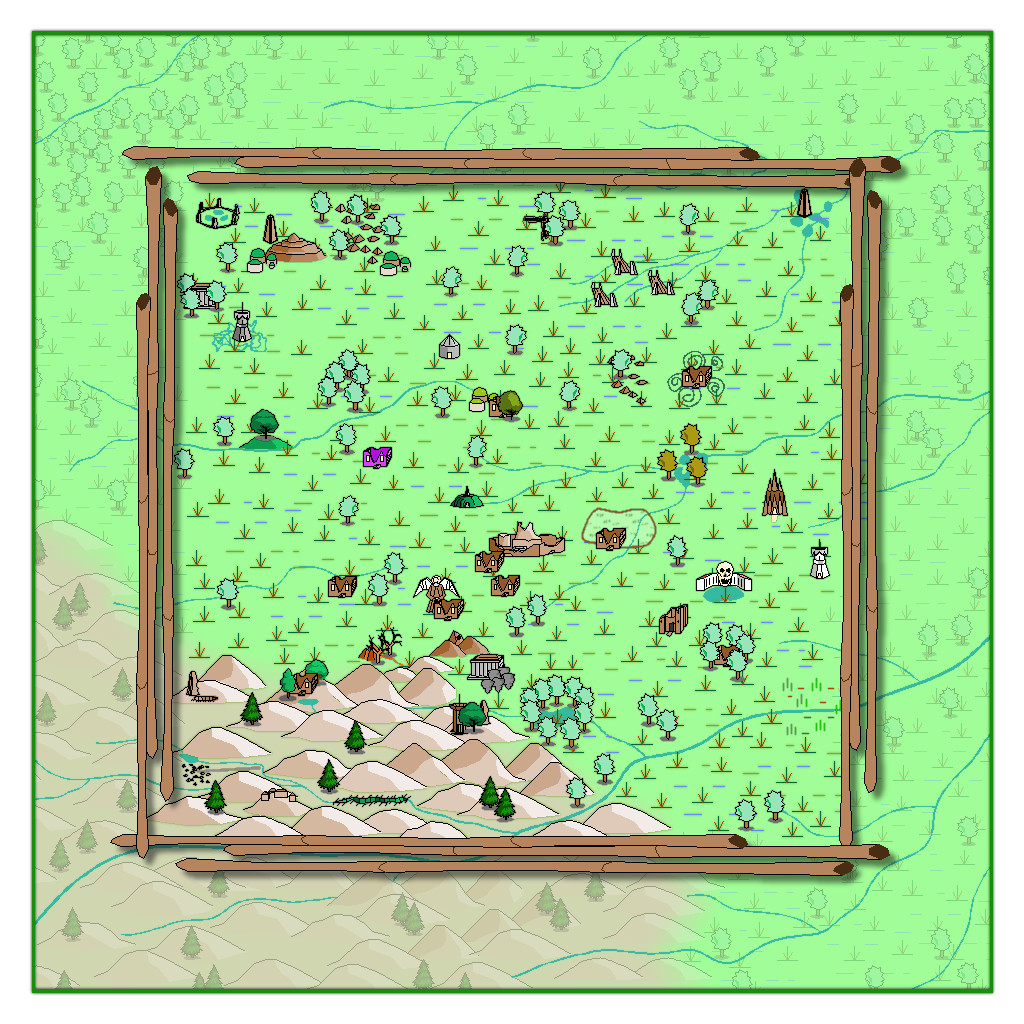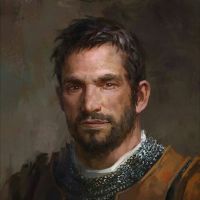
Wyvern
Wyvern
About
- Username
- Wyvern
- Joined
- Visits
- 3,149
- Last Active
- Roles
- Member
- Points
- 5,375
- Rank
- Cartographer
- Badges
- 24
-
Community Atlas: Embra - Villages
The southernmost village, Embra - Noonday, has a particularly narrow Clack stream, yet one that both the main near-Embra tributaries from the Clack Valley map, the Silverburn and Wadingburn, join by the east edge of this map:
Although there are more buildings this time, each is still only a ground-level property:
-
Community Atlas: Errynor - Aunty MacKassa's Home & Vehicles
Resuming the presentation of the final maps linked to Errynor Map 01 from previously, all concerning the deep-sea hag Aunty MacKassa, we must now zoom right in to Aunty's deep-sea-bed home:
From early in the process of constructing Aunty's lair, I wanted both a fixed-spot home cave, and at least one unusual vehicle, to let her get out and about in "her" 50-mile zone, as established earlier, more readily. This is what some hags have in real-world folklore after all, such as Baba Yaga's chicken-legged hut and flying mortar and pestle. I settled on two smaller "spare" random cave designs from what I'd downloaded from the Curufea's Random Cave Map Generator website earlier as suitable for her coral cavern lair, providing a pair of subterranean levels. These were chosen mostly because each had one cave of a form roughly like the stern of a ship, and a shipwrecked vessel seemed the most obvious choice for a deep-sea hag's vehicle. My idea was, being a faerie creature, and thus seemingly able to circumvent physical "laws" most folks take for granted as "normal", that Aunty would be able to shift her lair effortlessly between cave and vehicle whenever she chose, so a similar shape and size for at least part of both seemed reasonable. Then an idea for a second vehicle, suitable for amphibious sea to land transport, came about too, from which the clearest option was a hut made from another shipwreck, with - what else? - gigantic crab legs.
As I knew elements would need to be copied between all three of these maps, I decided to use the standard DD3 mapping package, except for the fonts. The Coral Cave map was done first (using the East Anglia font from the 2012 Cartographer's Annual):
The hatch and ladder between the levels of the Home Cave were chosen to fit with the ship's-cabin concept, of course, while the scatter of clutter and treasure (if it is) was distributed as a compromise between the classic D&D very cluttered hag's lair, and a map that could be read still. Although the deep-sea hag creature is largely an idea of my own of old, it has always been heavily influenced by D&D, and as the 5th edition allows powerful hags to have an assortment of servants, I came up with the illustrated variants of Undersea Gargoyles and Shadow Killer Rays here (the latter drawing partly on a 1953 short story by Joseph Payne Brennan, "Slime", which made a lasting impact on me when I first read it as a youngster). The illustrations for the latter, the north pointer, and the "sunken" border around the Lower Level map segment, were enhanced thanks to the chance publication of Remy Monsen's blog posting on the use of Bevel Effects to create sunken "carvings" on floors while I was preparing this map.
Then I thought it would be interesting to see just what Aunty MacKassa looked like. So I constructed this image of her, using CA3:
As usual, there'll be a PDF and series of text-file notes available in the Atlas to explain the game-relevant map details, from which you can discover why she has a long, bone hairpin in her grasp, and a pair of gold-tinted spectacles in her other hand, should you wish! Plus of course, I added her face to the Coral Cave map to serve as the Atlas link-point to this portrait.
-
Community Atlas: Errynor - Shark Bridge
Continuing with the sea-floor mapping begun with the Aak and the Aak Hills maps from "my" corner of Alarius, this time I swapped to the opposite corner of Errynor Map 01, to map the Kachayan stronghold marked by the mysterious sea-bed bridge structure crossing the Clawmark fissure line labelled "10" there:
I'd decided already there should be watchtowers on the bridge, and cave strongholds below it, one on each side of the fissure's cliffs. While it might have been nice to visualise the bridge as like the Map 01 symbol, a classic hump-backed arch rising high over the fissure itself, given the fissure was to be around 3,000 feet (over 900 metres) wide at the nominal "crossing point", that seemed impractical - and maybe a bit too "goldfish bowl ornament". So I opted for an arch set in the fissure, with a level bridge top resting on it instead. A vast arch by medieval standards, regardless.
Then I hand-sketched some to-scale ideas from these parameters, and quickly realised I needed a series of drawings to better visualise the general area around the bridge, give an impression of its size and nature, and show where the various Kachayan settlements were on and around it. This led to the Shark Bridge map, albeit it was actually the last map prepared in CC3+, because I needed a clear impression of the appearance of the towers and caverns first to be able to add them correctly to it.
The two versions allow switching between Imperial and Metric scales (via a toggle in the Atlas version, if all goes to plan).
Partly because I'd been mapping extensively in another style for quite some time to reach this point, partly for contrast, and as an opportunity to explore a - to me - new mapping style, I chose the Treasure Maps style from the October 2011 Cartographer's Annual, including its Treasure Map Deadhand font. I rather like this parchment-look texture, where you can't be quite certain it isn't really the surface of an old driftwood plank, with the map lightly cut into its surface in gentle relief.
It has the added advantage of coming with vector symbols drawn in a style that's quite easy to copy, so I drew-up my own not-symbols (they're just drawn shapes in CC3+, not "true" symbols) for the near-sea floor features I'd randomly added from an amended version of my deep-sea encounters & features lists prepared for the original Errynor mapping. As usual, there's more detail in the accompanying PDF and text-file notes.
For the detailed mapping, like Aak, I chose another black-and-white style - monochrome vision only in the lightless deep oceans! This time, I went with the Black & White Dungeons style from the December 2010 CA, labelled using the Avalon Quest font from the 2012 CA. Three maps for the towers along the bridge top, each with a vertical section and individual floor plans, plus a toggle option to show Metric or Imperial scale lines (though the grid is standardised at five-feet-squares only):
Then one more each for the West and East caverns respectively (floor plans only), again with the option of alternating scalebars:
Each separate map comes with its own PDF and text-file notes.
The tower designs were based on my own previous notes regarding Kachayan sea-bed surface architecture, while the Caverns used mildly reworked versions of more random layouts created by the Curufea's Random Cave Map Generator website, like that for Aak village.
-
Community Atlas competition entry: The Summer Palace of the Winter Queen
Bit of an excursus today. I've never really done full "works-in-progress" reports on the Forum here, chiefly because when I'm working on a map, I'm not thinking about anything else - such as how I've got to the point I have - which means taking screenshots or jotting down notes along the way so others might be able to follow the process is quite alien to me. However, a contest is nothing if not a chance to stretch beyond the expected bounds, so here are some thoughts on how I constructed the basis of Palace 8 in this series.
Partly, this came about because with working on such a series of similar yet different maps, each using an imported bitmap image as the template, I've established a pattern for doing so, drawing on previous experience, as a lot of my earlier mapping has involved copying layouts from images into CC3+.
Before even starting any of the maps, I'd picked the ten photo-micrographs of snowflakes I intended to use as the individual Palace shapes, and given them a number each, so I knew what order I'd be working on them. Then I printed-off copies of the ten. I like hard copies of such things to-hand, as it means I can jot notes on them in between mapping sessions, and can think more on the map design without having to be sitting at the computer. Additionally, they can be very handy while I'm tracing the image in CC3+, and find I've suddenly hidden some key item with a polygon that I now need to see!
These maps were always going to be a bit unusual, because what I'm doing is taking tiny, microscopically-imaged objects and expanding them to Palaces which are several hundred feet across. So there was a scaling issue from the start in that. However, looking over the images and deciding how the final Palaces were to be drawn, it was clear the key trait was going to be the minimum passage width, to allow access to all parts of the final structure. I fixed upon a general minimum width of 10 feet, from which I could then physically measure features on the hard-copy images, that in turn gave me the approximate maximum dimensions for the area each Palace would need to fit within, and hence roughly what the size of each map would need to be to allow for titling, labels and overall layout.
Palace 8's measured image meant the Palace itself was going to be around 515 feet by 460 feet, so I guessed that a map around 600 feet square might be OK. Firing-up CC3+, and having recently worked on three black-and-white style maps in succession, I opted for the Jon Roberts Dungeon style for Palace 8, from CA54, as a complete change. Aside from setting the size in the New Drawing Wizard, I wanted a paler background than the default to represent snow or grey-white ice, and went with the Stone Light Grey option from what the style offered.
Once the new map had opened, it was clear the fills for the map's frame and background needed adjusting to avoid the dreaded tiling effect, so I greatly increased both fill sizes using Tools - Set Properties - Fill Styles from the drop-down menus, after a bit of experimentation (and locating the correct fill style after picking the wrong one for the background first of all, and wondering why nothing happened when I adjusted it...).
After that, I created a new Sheet, BITMAP, and Layer, also imaginatively called BITMAP, into which I could import the map image. Now, placing and correctly rescaling such imported images is something I've long struggled with in CC3+, because of its restricted redraw standards, where most of the time, you can't see what it is you're trying to resize, or where its edges (which almost never coincide with the image edges) are going to land. So my trick now is to create a rectangular polygon with only a thin outer line in a bright colour, place that in the right spot on the map, and only then bring in the bitmap image. It isn't a perfect solution, but it's the one I've grown used to.
Of course, actually drawing the linear "box" is a bit of a nightmare in itself, because you can't just draw an open rectangle like this and tell CC3+ what size you want it to be as you might in a graphics program, or something even more basic, like Word. Instead it means counting dots on an appropriate-sized grid. For large areas like the Palaces, it's appallingly easy to lose track, so what I do is draw a single line with a kink in it, using the Line tool (not the Path one). For anyone unfamiliar it's:
That actually creates three separate lines, not just one. On the next image, the grid dots shown are those for the 10' Grid, 2 Snap (so the snap runs at five-feet intervals, with the dots every ten feet), and the lines are in orange:
Then I rotate the longer line (that at the left side here) through -90° from its left-most point. (This is because CC3+ insists on doing angles backwards, not logically clockwise! We've discussed this on the Forum before. There are good mathematical-programming reasons for CC3+ doing so, which if nothing else will convince you that mathematics has very little to do with reality after all ?). And then draw a new linear box of the right size, using that left-most point as its top left corner, and the construction lines as templates to give the right size overall:
Then the construction lines can be deleted, and the new box moved to a more central position, again using the snap grid dots as a guide (not shown here, as the image size meant you could scarcely see where the box was any more with the grid left on):
After which, using the Draw - Insert File command from the drop-down menus, the correct snowflake bitmap image can be brought in, resized and correctly positioned, using the construction line box (and a fair amount of adjusting and tweaking):
The box can also then be deleted. Sometimes, I draw in one or two crossed centre-lines like this as well, as they're useful for adding items such as the title, if it's meant to be centred somewhere near the map's periphery. Which means at this point I also often add the map's title, so I can remove all the construction lines together. (If they might be needed again later, I usually set them up on their own Sheet in the first place, so they can be hidden or called back at any stage.) In this case though, the title is long enough it's not hard to centre it without needing that:
Next up is to start the mapping proper, by drawing the floor. Looking at the image, it's clear there are several areas where the floor should be missing in the final version, within the outermost line of the flake, so I'd already decided with this mapping style, that would be best accomplished using a Multipoly command on the completed outer floor. This is easier by drawing the areas of floor that will eventually be omitted first, and although it's not so useful for seeing all the pieces you've drawn just before going to the Multipoly action, I like to use the same fill style as the final floor will be, mainly so I don't forget later... Thus:
I really liked that Water Green Light fill in the Jon Roberts style, as representing here ice instead. Just has the right colouring and texture to me to give a magical "zing" to the whole. It is a magical ice Palace, after all. You get a better impression of it once the whole outer floor's drawn:
And yes, the tiling's very obvious here. While that could be changed, it'll be much less obvious on the finished drawing, so I left it alone, and just carried out the Multipoly command at this stage:
After which it was time to consider adjusting the Effects on the Floors Sheet:
and adding the central floor design based on what the imported image showed, using the Solid 10 to 30 fills, which have the perfect level of transparency to still let the underlying "ice" floor show through, even after adding a suitable Bevel Effect to make them look sunken into said floor, after one of Remy Monsen's recent blog posts about using such Effects:
Beyond which, it should be just a matter of adding other smaller details, labels and a grid. While I'd love to show you what the final map looks like, that will have to wait for another time, as the amount of time and effort involved in putting these notes together meant I didn't manage to get the map itself finished in time to post it today as well!
Starting to remember why I don't do "proper" WIP threads here now... ?
-
Community Atlas competition entry: The Summer Palace of the Winter Queen
As is fairly obvious, I quickly settled on a standard set of seven areas for each Palace map. It is essentially the same Palace each time of course, just with a different design and layout to keep things interesting. Thus I thought some further notes extracted from the forthcoming PDF texts might be an appropriate additional level of explanation here, following on from the general notes last time.
The air throughout the Palace is always fresh and calm regardless of conditions immediately outside the Entrance. While cool, it is of an equitable temperature for whoever physically enters it (something which can feel different for every entrant). The atmosphere is ordinarily solemn and slightly saddening, as if coloured by the ephemeral nature of summer, coupled with the presence of the many passing souls. Ceiling heights, while variable as befits an apparently natural crystalline ice form, are rarely less than 15 to 20 ft (4.5 to 6 m), typically of angular, sometimes spectacular, vaulted nature.
Regardless of its form, there are always seven major areas within the Palace: A guarded Surface Entrance and Reception Area, through which all must first pass, whether physical, immaterial, living or dead; A Ballroom for parties and entertainments; A Banqueting Hall for feasting and its adjoining Kitchen; A Crystal Garden rich with more summer ice-flowers; A Hall of Mirrors of ice; A range of Servant & Guest Quarters; and A Throne Room with the Queen's Chambers nearby.
Surface Entrance: Surrounded by a small garden of summery ice-flowers and foliage, the entrance is always a low, point-topped, open archway around 5 ft tall by 3 ft wide (1.5 by 0.9 m) set in a back-sloping wall of ice. The ice-plants are placed on both this wall and the more level surface just in front of it, always with a cleared path leading a little indirectly to the Entrance, a little wider than the archway. This platform, wall and arch are present even when the Palace is set in the clouds, as they are parts of the Palace itself. The Palace cannot be entered by any means in any other way. Pushing physically into the surrounding clouds, or digging into the ice beyond wall or platform finds no trace of the Palace, for instance, while magical transportation devices and spells will not function into or out from the Palace. Someone who has died in the right environment or circumstances will have their soul pass through here at some stage, although the timing is always uncertain, and usually inconsistent with that in the physical world. Equally, the dead have no control over when or for how long they may be here. Once through the archway, the Palace opens-up immediately as mapped, and the entrant finds themselves at the start of the Reception Area.
Reception Area: This commonly has several awkward, narrow places in it, sometimes with separate ice-walled chambers as well. There are physical guards of various kinds, many to most of magically-animated ice construction, often armed and armoured with ice that has the properties of magically-empowered metal. More typical arctic-environment intelligent creatures may be encountered here at times as well. The numbers involved are always more than a physical group could overcome, and fresh ice-constructs will simply manifest from the ice whenever required. Such constructs are rather like antibodies inside a living creature, whose numbers increase to match the level of the invading threat. This means such constructs may appear from any ice surfaces elsewhere in the Palace in response to threats too. A few guards may be incorporeal spirits, souls temporarily on the Palace's staff, and if so, they may be known to whoever has just entered. This latter is always intentional.
Ballroom: A large, open area for entertainments. When in use, temporary low ice platforms may grow from the floor for performers or an orchestra, say (often made up of passing souls), along with features such as tables and seats with refreshments. Glittering lighting effects, enhanced beyond the Palace norms, can be employed here too. Most guests are normally disembodied spirits, thus the events can have a sombre tone, rather more wake than party, for instance. A literally haunted ballroom.
Banqueting Hall: A substantial ice-table, commonly of angular "C" or "U" shape, is the dominant fixed feature, with fixed ice seats - usually benches - alongside it, and a larger throne-like chair for the Queen at the table's head. Despite most guests at the feasts here being spirits, any physical guests will find the food and drink of excellent quality, albeit the food is exclusively bread and the drink fresh water. However, the bread has an array of forms that include many typical loaf types, and more made to look like meats and fruits. Each has a hint of the taste its appearance would suggest. The bread provides better sustenance than meals of greater variety found elsewhere, and has mildly healing properties for those in need of it, in addition. Similarly, the water comes in an array of different temperatures, colours and tastes, again with beneficial effects that complement the healing powers of the bread. All the tableware is of exquisitely-fashioned ice, while still possessed of a strength and durability closer to metal and pottery than ice. Even the spirits can partake of the food and drink, using the utensils as normal, though only so long as they are seated at this table.
A Kitchen area either adjoins or is close-by the Banqueting Hall. This contains a physical, if seemingly much too small, bread oven, materials and workspaces suitable for preparing bread. The Queen may be here at times, physically making the bread. She prepares all of it daily.
More to follow (if nobody complains this isn't sufficiently map related, at least)!
The bread concept came about largely because of a paper in the latest issue of the journal Folklore, "Winter Crones and Bread-Givers: The Northern Iberian Vieya" by Cristobo de Milio Carrín (can't provide a link, sorry; the journal's subscription-only currently, though you can find a free-access version of the paper's abstract on Semantic Scholar here), which caught my attention recently. It seemed appropriate, particularly as I wanted to keep things minimalist overall, hence the bread & water theme.
-
trace map aligning to grid
For scaling, the option I use is the drop-down menu command: Info => Distance. Make sure "Ortho" is active, but that "Snap" is off (buttons at the lower right of the CC3+ window), and zoom-in so you can see the grid squares on your image very clearly.
Then use the Distance command to measure the separation between the horizontal and vertical grid lines for a single square. "Ortho" will ensure you're only able to measure in the true vertical or true horizontal directions. (Although both should be the same, sometimes a minor distortion in the map image, especially if it's been scanned, means they're not exactly equal, and your own by-eye estimates can be a few pixels, or more if you're me, out as well.)
That will give you an overall value in map units (feet or metres for dungeon-scale maps, depending on which option you're mapping with) for the size of the grid squares on your image. If that doesn't match with the size of the snap-grid squares in your CC3+ map, then yes, you'll need to rescale the image.
To do this, use the :CC2SCALE: command (button to the mid-left side of the CC3+ window). Click the button, select the image using one edge of it that's free from other entities in your drawing, then click "Do it".
The Command Line will ask you to pick a scale origin (I often use the bottom left corner of the image, but pick whatever point seems best to you), and then it asks "Scale to" with a couple of further prompts. The easiest option here though, is simply to type in the value of the image's grid size, as just measured, and the size you need it to be, the two values separated by either the multiply or divide keyboard options, as appropriate. For example, if the image's grid is showing as 9.4 feet and it should be 10 feet, use 10/9.4 to make your image larger (if you get it wrong, just use the :CC2UNDO: command!).
Then check using the Distance command again, to see if this is now the correct size (or closer to it - sometimes, because of the decimal places involved, it won't be exact, but close enough is usually good enough, though you may need to adjust your CC3+ drawing in places to accommodate any differences). If it's still some way off, just use the Scale command again.
Good luck and good mapping!
-
Community Atlas: The Hall of the Seer, Glaciär Kristol, Ezrute
Somehow, I've seemed always to distract myself away from the primary focus of this sort-of Dungeon24 project, which was meant to be simply mapping small, underground complexes for the Atlas regularly and quickly (ha!) through the year. This latest item, the last of the four based on the random rolls from the "Explorer" dice set in the Inkwell Ideas Dungeonmorph Dice range, is a case in point. One little subterranean map has grown into three - a surface region, a settlement and the underground complex. Or "under-ice" complex as it became.
The latter does make it seasonal for northern hemisphere readers here, at least, strange in itself, given the location was determined almost a year ago now, quite randomly. That site was to be in the Glaciär Kristol region, the heart of Nibirum's small, frozen, southern continent of Ezrute:
When I checked the area map, I discovered quite a number of places had already been developed there, mostly towards its periphery. Examining those, none quite fitted what I had in mind for this small complex, which - in-keeping with the other "Explorer" dice-based maps - was to be tied-in with ideas from the Shadowdark RPG. One of the supplementary 'zines published by The Arcane Library for Shadowdark, "Cursed Scroll #3: Midnight Sun", deals with fantasy-Scandinavian-style sea-borne raiders, peoples and places, from which I took the concept of an oracular seer as the base theme for this Dungeonmorph map. And since everyone else had so kindly left the central area of the regional map unexplored, I picked a suitable spot by a crossroads there for this "Hall of the Seer" one:
I've reduced one of the effects on the roads in this image, since at the normal Forum resolution, the lesser trails especially simply vanished. That little orange square is six miles per side, and based on how other maps in this region had been tackled, I thought initially simply to place the dungeon map there with no others to zoom-in step by step. However, ideas had developed around this map by then which wouldn't let me alone, hence how I decided on an overland area map, with a small settlement by the underground complex as well.
Partly this development came from the region's location. The Hall map is at roughly 72°S latitude, which puts it well inside Nibirum's Antarctic zone, with constant daytime in midsummer, constant night at midwinter. When I checked the geomagnetic map for Nibirum, I realised this spot also lay almost directly under the midline of the southern polar auroral zone (I've highlighted central Ezrute with an orange ring here):
That means those winter nights aren't always so dark as might be thought, with frequent auroral events to brighten the landscape a little - and spread their magical influence over the surface too, of course.
Looking over the written notes for a couple of the existing maps in this area that had them suggested the possibility of more unusual elements at play nearby, which fed into the base-map designs for all three in my small group, where ideas sparked by one map bounced into the others.
For the first map, covering that six-mile square, there was a mild complication, since I wanted to continue the black-and-white hex-map style I'd used previously in these "Explorer"-design-inspired map sets. Only being hexes, that meant the area was best-served by a map six by seven one-mile hexes in size... Random rolls on tables from "Into the Wild - Omnibus Edition" by Third Kingdom Games, as used previously in the Barrows of the Ferine Magi maps, coupled with some from Shadowdark and Cursed Scroll #3 followed, in setting up the contents for hexes within the area, after which the mapping could proceed:
This time, I decided to let the terrain spill out for another couple of miles beyond the hex-mapped zone, to allow for better context, and also to make the labelling clearer, without cluttering the centrally-mapped part. Could not quite believe the random rolls had generated two ley lines in such a small place, as they're not that common to roll-up. They did fit perfectly with what I had in mind from the extra-magical auroral effects hereabouts, however.
The map description notes have details on what's where, although I deliberately scaled-back on the significance and size of many features, to better suit this little area. There's an old temple with guarded treasures that nobody here knows about in hex 001, minor terrain oddities sprinkled here and there (including a sheltered vale where the mammoths like to hunker-down when the weather turns bad - hex 104 - and where arctic smilodons come a-hunting!), a small frost giant homestead in hex 101, and Seer's Hall Village in hex 204, which enjoys a milder microclimate thanks to being in the fringes of the small Redwoods forest, on whose northern side is the great 200 ft (60 m) ice tree Ylvabrand (hex 302). There are some ancient, worn statues along the Skorra Road in hex 502, commemorating an ancient battle nobody now recalls (which weirdly ended-up randomly in the very spot the road and ley line almost converge), Ice Kraken Hill, where the ley line nexus is (yes, that's a living, albino kraken in an ice hill right there; favoured as a deity by a secretive cult, naturally 😉), a crevasse in hex 605 in whose depths the temperature somehow holds-up around 20°C (70°F) year-round, shunned by the locals because a group of buried Dwarfs there have become undead Ice Zombies or Draugr, who can swim through frozen ground and rock as if it were water (luckily, they can't abide the ley lines), and what seems to be an oval ring of granite menhirs on the line of one ley line in hex 606, that are really upstanding pieces of granite from a ring-shaped surface outcrop in actuality, all of which seemed suitably odd.
Fun times! Village map next.
-
[WIP] Community Atlas: Snakeden Swamp, Lizard Isle, Alarius - Dedicated to JimP
Here we see the first segment of "new" ruins being added, around the originating dice-map segment in the lower centre-left:
It was at about this point I realised it was growing harder to define the road lines, and where the hill contours were, a problem that worsened when the vegetation scatter began to be added around those previously clearer areas. Thus a lengthy spell of experimentation, changing the effects and colouring involved, followed. That in turn needed more features adding elsewhere, using the central section adjoining that already completed, just to make sure everything still worked OK. The results of all that:
Which only brought up a further issue, as it's obvious that the reduced-resolution images are all looking rather too dark and messy now, especially over those ruined structures. So more experimentation followed with higher-res images and some antialiasing, to get to this degree of clarity (same image as above):
Following all of which, there wasn't much time to do more than a few further additions ahead of today's postings, which is where things are currently:
Not too far from completion now, at least, albeit still with the labelling to begin, not to mention those extra streams!
-
[WIP] Community Atlas: Snakeden Swamp, Lizard Isle, Alarius - Dedicated to JimP
That adjustment process mentioned previously ended-up spread over several days, as time wasn't available to try to do everything together otherwise. Thus there's just the one version showing the end product of all that, after some further vegetation and streams had been added. I did at least manage to slip in a couple of streams that simply vanish into the swamps though, instead of continuing off-map, which is something I wanted to do from quite early on.
I'd thought initially that simply the faded outer ring of basic terrain would be sufficient to indicate the fully-mapped central zone. As the mapping proceeded though, it grew more obvious that that wasn't enough, so I'd started thinking of alternatives from quite an early stage, without settling on anything definite (hence the continued absence of anything like this so far). Now, I felt what was needed was a new frame of some kind, yet one which wouldn't have the hard cut-off of the traditional map border, because it was going to go inside the whole map, surrounding that middle square.
What I chose was a heavily rescaled version of one of the bamboo symbols, with separate X and Y axis adjustments, placed as if done quite casually. That though also made the original outer frame redundant, so it was swapped out for a simpler coloured line instead to give this:
The bamboo poles were placed on the CARTOUCHES sheet, which already had a helpful Drop Shadow effect on it, which with a suitable adjustment, is what we see here. When I began adding labels to the final map version though, I found this new bamboo frame - which already looks a little too awkwardly small and close to the feature markers in places - needed a further slight enlargement. After that a few further changes were needed on the map, to help get a better placement for the labels, and also to correct a few errors in the symbols when checking again with my descriptive notes. Plus some extra embellishments were added to complete the map - as I just couldn't get away without adding a couple of those CA monster symbols after all!
Eventually, there will be text and PDF files on all this for the Atlas version, once I've fully deciphered my hand-scrawled notes, as there are still more maps to prepare in this area, as we zoom-in to Snakeden Hollow and those ruins that started it all...
-
Loopysue Hits 10,000 Posts!
Apropos of nothing much beyond my spotting this, but I see @Loopysue has just achieved the milestone of 10,000 Forum posts here today, the first person to achieve this!
Round of applause for Sue, please!
👏👏👏
😁



